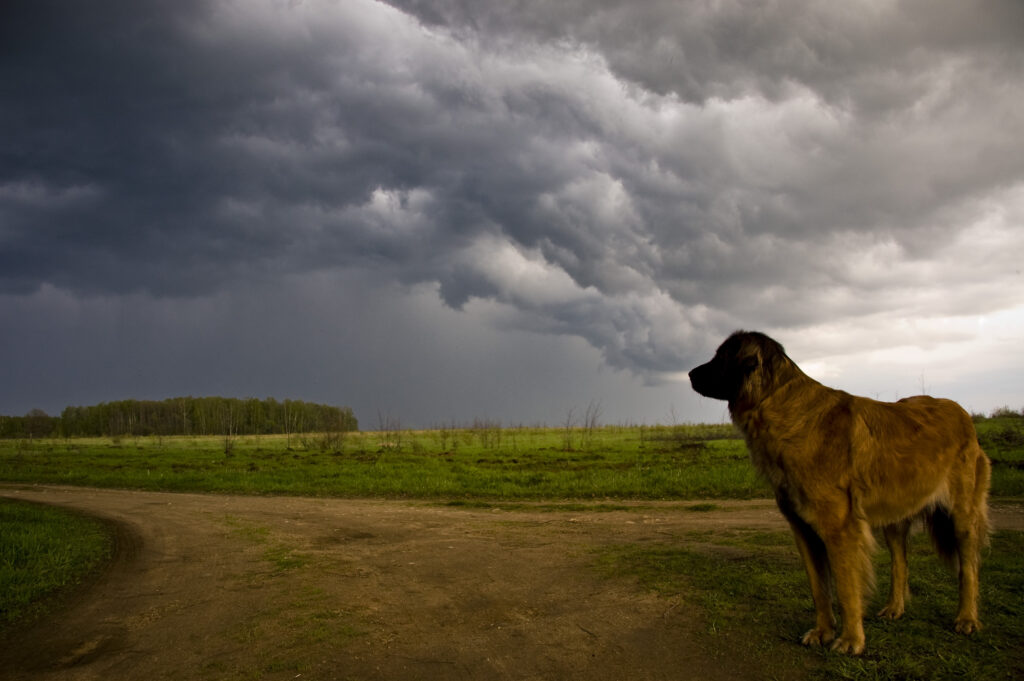Introduction
While summer brings warm weather and outdoor activities, it can also bring thunderstorms that may trigger anxiety and fear in our furry friends. Many dogs experience storm phobia, which can manifest as trembling, pacing, excessive drooling, and even destructive behavior. In this comprehensive guide, we will explore various strategies and techniques to help your dog cope with summer storm phobia, ensuring their well-being and reducing their anxiety during stormy weather.
Understanding Storm Phobia in Dogs
- Storm phobia is a common condition in dogs and can be triggered by a combination of factors, including loud noises, changes in barometric pressure, static electricity, and flashes of lightning.
- It’s essential to recognize the signs of storm phobia in your dog, which may include panting, trembling, hiding, excessive barking, or attempts to escape.
Creating a Safe Space for Your Dog
- Establish a designated safe space in your home where your dog can seek comfort during storms. This can be a crate, a specific room, or an area where your dog feels secure.
- Make the safe space cozy and inviting by adding comfortable bedding, familiar toys, and items that have your scent. This can help provide a sense of security during storms.
Noise Reduction Techniques
- Loud noises from thunderstorms can intensify your dog’s anxiety. Consider using white noise machines, calming music, or specially designed dog-appeasing pheromone (DAP) diffusers to mask the sounds of thunder and create a more peaceful environment.
- Close windows and curtains to minimize visual stimulation from lightning flashes. This can help reduce your dog’s exposure to the storm and alleviate their anxiety.
Desensitization and Counterconditioning
- Desensitization and counterconditioning techniques can help your dog build positive associations with storms over time. Start by playing recorded storm sounds at a low volume while engaging in activities that your dog enjoys, such as play or treat time.
- Gradually increase the volume of the storm sounds during these positive activities, rewarding your dog with treats and praise for calm behavior. This process helps them learn to associate storms with positive experiences.
Thunderstorm Calming Products
- There are various calming products available that can help alleviate your dog’s anxiety during storms. These include calming vests, anxiety wraps, pheromone collars, and natural supplements designed to promote relaxation.
- Consult with your veterinarian to determine which calming products may be suitable for your dog based on their specific needs and health considerations.
Professional Behavioral Assistance
- If your dog’s storm phobia persists or worsens despite your efforts, consider seeking guidance from a professional dog behaviorist or a certified animal behaviorist. They can provide customized strategies and techniques to help manage your dog’s anxiety.
- In severe cases, medication prescribed by a veterinarian may be necessary to alleviate your dog’s storm phobia. Medication should always be used under professional guidance and as a last resort when other methods have been ineffective.
Maintaining a Calm Demeanor
- Dogs are highly sensitive to their owners’ emotions. During a storm, it’s crucial to remain calm and composed to help reassure your dog. Avoid displaying anxious behavior, as it can reinforce their fear response.
- Provide gentle reassurance and comfort to your dog without reinforcing their anxious behavior excessively. Encourage calm behavior through positive reinforcement and reward-based training.
Conclusion
Summer storms can be a source of anxiety for dogs with storm phobia, but with understanding and the implementation of appropriate coping strategies, you can help alleviate their distress. By creating a safe space, using noise reduction techniques, implementing desensitization and counterconditioning methods, and considering calming products, you can provide your dog with the support they need during stormy weather. Remember to consult with professionals when necessary and maintain a calm demeanor to guide your dog through their fear and help them feel safe and secure.

